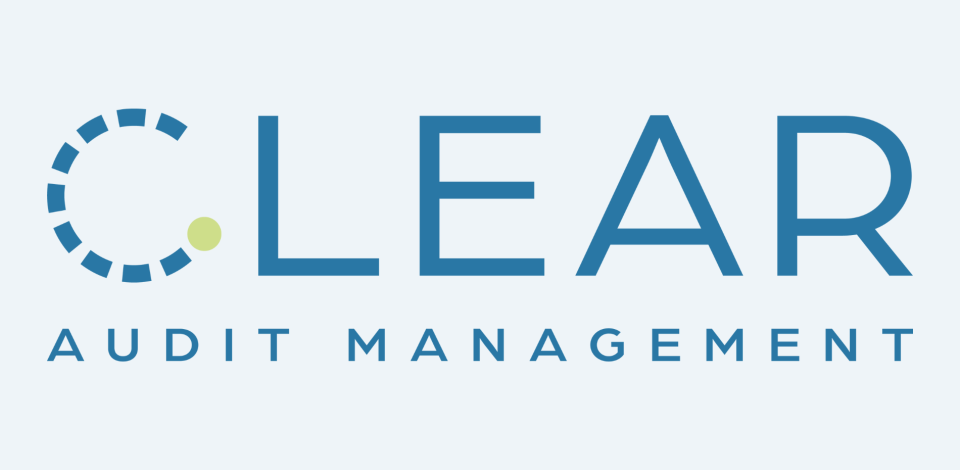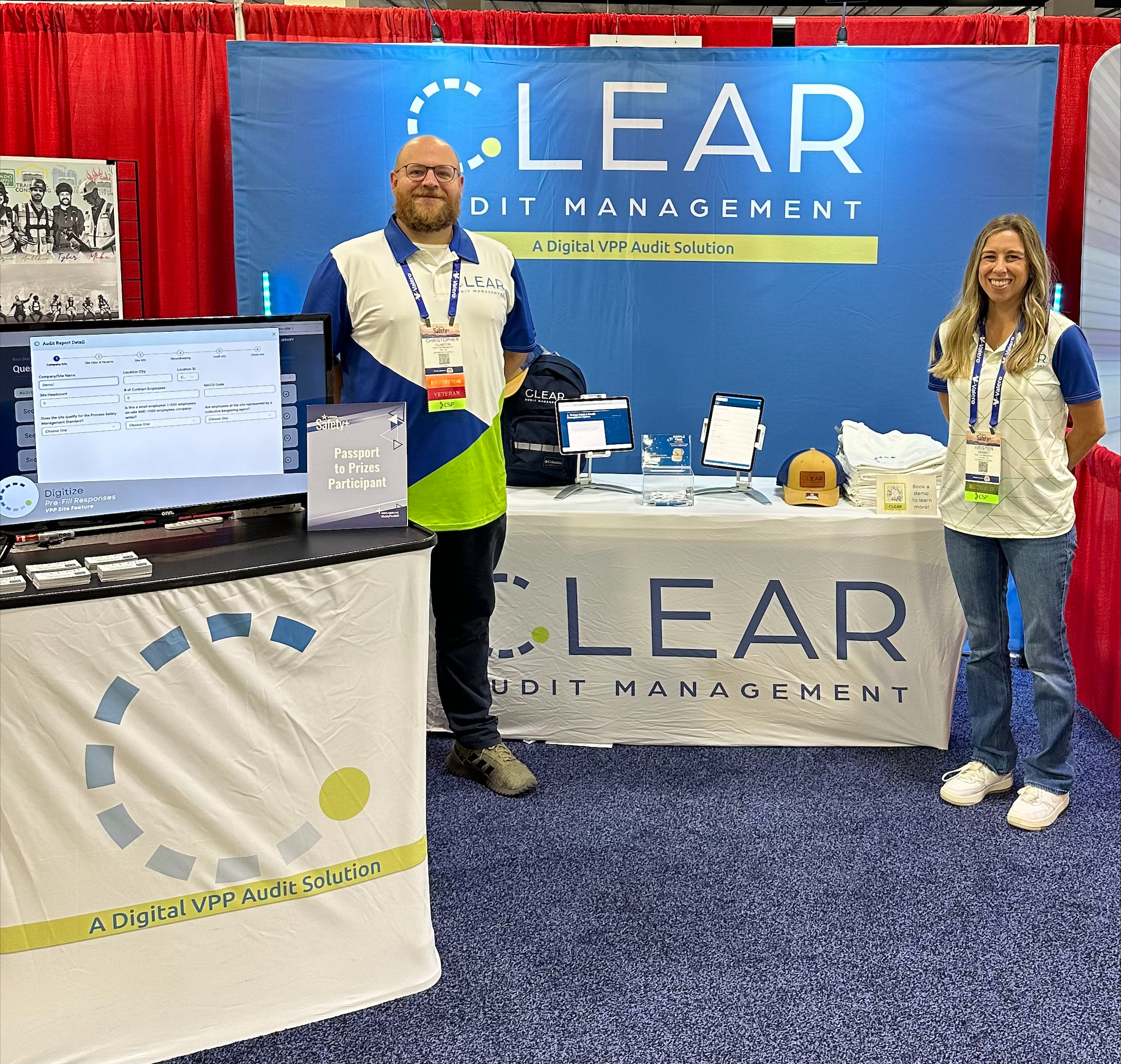Capstone to Company
After completing their Professional Master's in Occupational Safety and Health capstone project, two alumni took that knowledge and built a VPP audit management company.

For two members of Georgia Tech's Professional Master’s in Occupational Safety and Health (PMOSH) Class of 2021, the required capstone project led not just to a degree, but to the creation of an entire company.
Capstone Kickoff
In August 2019, during kickoff week – the time when each cohort gets to know their fellow students, faculty, and support staff – new students Kristen Denney and Christopher Clanton found themselves sitting at a table with three other safety professionals, John Charles Leaphart, Susana Rendon, and Max Isaacs, all excited for the learning opportunity ahead of them. Despite only meeting in person once, due to the COVID pandemic, the program’s structure encouraged collaboration, and the five ended up becoming a study group. For the next two years, they completed group assignments together and eventually teamed up for the capstone project.
When discussing what the group would focus their capstone project on, an idea sparked in Denney’s mind based on a need she saw in her workplace. The manufacturing facility she worked for was about to undergo a major Voluntary Protection Programs (VPP) audit, and the documentation portion of the audit fell under Denney’s responsibilities.
According to OSHA, VPP is a protection program for employees and workers in private industry and federal agencies. To qualify for VPP, worksites must undergo rigorous onsite evaluations to show that their health and safety management systems are effective and keep their injury and illness rates below national Bureau of Labor Statistics averages for their respective industries. While in the program, VPP participants are exempt from OSHA programmed inspections and are re-evaluated every three to five years. An OSHA VPP audit evaluates four specific areas of the work site's safety and health management system: Management Commitment, Worksite Analysis, Hazard Prevention and Control, and Safety and Health Training.
These four elements aligned with the capstone project's prompt: to display effective knowledge from all courses within the program while interacting with industry professionals to identify a real-world safety problem and describe an effective solution to improve the safety situation. With this in mind, the team planned to assist Denney in preparing for the documentation portion of the audit. However, as conversations progressed, the group realized they didn't want to limit themselves to just one extra regulatory program and began questioning how they could bridge the gap between VPP and other safety programs.
With unified goals, the team began to work on a gap analysis of two popular OSHA protection systems, VPP and ISO 45001. Their discoveries led to the framework for a digital platform, named SCAMPI, that could help any size company streamline its compliance with either system's safety standards.
Building a Company
Following the end of the program Denney, Clanton, and the entire group stayed connected to discuss the possibility of their gap analysis going to market. While everyone was interested in the subject, Denney saw an opportunity and had the time and motivation to build a business from the ground up.
"Most safety professionals are financially risk averse, obviously making them well suited for their job. At heart, I am a lot less risk averse than a lot of my colleagues and after seeing SCAMPI evolve from the spreadsheet to a software mockup, I knew this could be something."
Before Denney could execute her plan she needed to own the intellectual property that was created through the team’s work together. Over multiple discussions, the group decided on a price they all felt was fair – $750, and a bottle of bourbon. While Clanton, Leaphart, and Rendon each took $250, Isaacs took a different approach, suggesting a good bottle of bourbon, a luxury he wouldn't ever purchase on his own.
After selling his portion of the intellectual property, Clanton then took Denney up on an offer to buy back into the company as an equity stakeholder.
Modernizing the Auditing Process
While the team’s capstone project focused on the gap analysis, Denney and Clanton found themselves drawn to the idea of maintaining VPP's relevance in the wake of the newer international safety program, ISO 45001. Denney shared that her investment in VPP comes from the fact that “it has given companies a framework for exceeding OSHA regulations at a much lower cost than ISO 45001" and over 2,200 worksites are VPP compliant in the United States. With the company's scope now clear and partners Denney and Clanton free to build from the capstone project’s discoveries, CLEAR Audit Management, a digital VPP audit management solution, began to take shape.
At the start of 2023, OSHA shared a VPP memorandum discussing the need to modernize and the "modernization listening sessions" they would be hosting. While attending one of the sessions, Denney learned about OSHA's interest in digitizing VPP. With their ideas for CLEAR already in the works, the partners had a new motivation "to become the preferred standard and to make the audit process easier and more efficient for both the auditor and the client," Denney said. In lay terms, they wanted CLEAR to become the TurboTax of VPP audits.
CLEAR's Launch and Future

By August 2024 – five years after Denney and Clanton met on their first day of the PMOSH program and with the help of Clanton's wife Alice, equity stakeholder and back-end developer – CLEAR Audit Management was ready to launch. In late August, Denney and Clanton attended the VPPPA 2024 Safety+ Symposium where they had the opportunity to share CLEAR with thousands of safety professionals. From site-level safety employees to directors of safety and even members of OSHA's Office of Partnerships and Recognition, Denney and Clanton received positive feedback from a wide range of potential users. “All in all, this conference gave us outside validation that our product is as well executed and as needed/welcomed as we perceive it,” Denney said.
Looking ahead, Denney and Clanton are excited about CLEAR Audit Management’s potential to not only to modernize the VPP audit process but to also influence the future of occupational safety management systems on a broader scale. As they continue to refine and expand their offerings, the SCAMPI gap analysis will eventually breathe new life as the Safety Management System Gap Assessment and ISO 45001 program audit tools. No matter the safety system they remain committed to helping organizations meet and exceed safety standards with greater efficiency and effectiveness.
From day one to year five Denney and Clanton’s journey towards launching CLEAR has been a testament to their collaborative approach and dedication to enhancing workplace safety. With a firm foundation in place and an ever-growing need for digital solutions in the occupational safety and health industry, CLEAR Audit Management is ready to become an industry leader.
Credits
Photos provided by: Christopher Clanton and Kristen Denney

